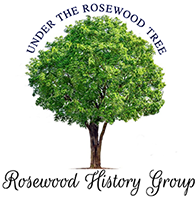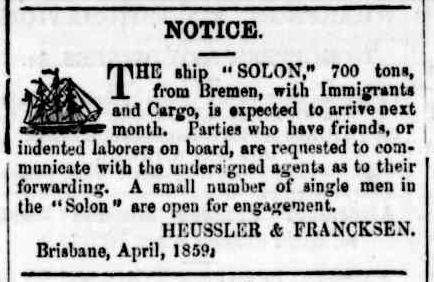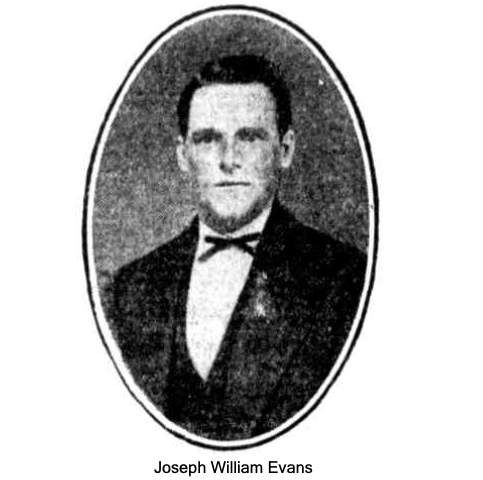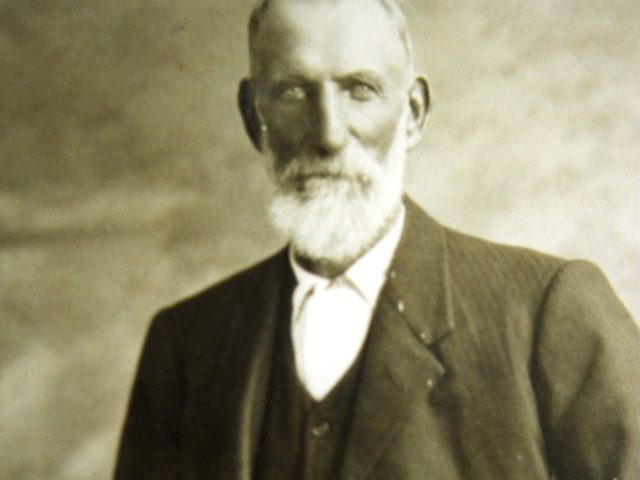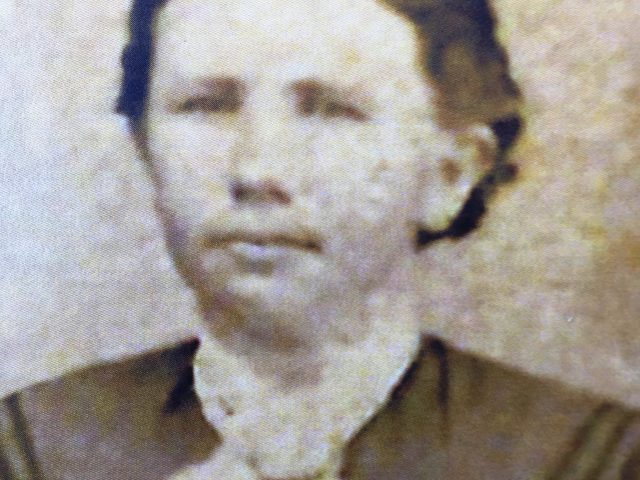Johann Heinrich Ludwig Füllekrug
A German Immigrant Arriving in 1859
Johann Heinrich Ludwig Füllekrug was born in the Klein Flöthe in the Kingdom of Hanover on March 12, 1832 the son of Christoph Füllekrug and Sophie Haman. His father was a farm labourer and then a soldier. Klein Flöthe was a very small village in a rural area not far from the city of Wolfenbüttel. Heinrich, as he was know, attended school until he was fourteen and on leaving found whatever work he could. He was lucky to get enough work to feed himself as employment was hard to obtain and the people in general were very poor.
Heinrich worked as an ordinary farm hand mowing and reaping, and earned the big sum of £1/13/- per year. When he reached the age of 16 years he received a rise of about 3/- per year till he was earning £2/4/-. Before he migrated to Australia he was being paid £4/10/- per year. Towards the end of the 1840s Germany was experiencing high costs of living. Rice was worth 15/- per bushel and other things were equally dear. This was because of great shortages in Russia which caused many Russians to move to Germany and hence the demand for goods pushed up the prices of everything. This led to the 1848 rebellion and then the unification of the German states into Germany.
When Heinrich was 26 years of age, he left Bremerhaven (Bremen) with 144 other immigrants, in the ship Solon on 29th December, 1858 and arrived in Moreton Bay on 25th May, 1859. About a week after his arrival he got work with a Mr. Payne, trenching in a garden at £30 a year, a big rise on the £4/10/- he had left in the old country. He only stayed there three months then decided to head for the Tooloom Diggings (about 30 kms from the Qld border), where gold had been discovered in 1857.
After obtaining equipment Heinrich and two mates left Brisbane for Ipswich in the Settler, a stern wheel paddle boat, which used to run between Brisbane and Ipswich. From Ipswich they tramped to Tooloom. Once there Heinrich stayed for only four days then left with a party of sailors who claimed that Tooloom was not worth the digging. On the way back he crossed by Coochin and Heinrich got a job at Peak Mountain Station (in the area today known as Peak Crossing), with Mr. William Watkins, who managed for a Mr. Wilson. The area grew cotton.
Heinrich stayed at the station 12 months and ploughed with bullocks using the first plough made in Ipswich. It was made by the late Mr. Hugh Campbell. He then went to Fassifern Station owned by Mr. Arthur Weinholt and stayed there eight years. He was sent as cook and horse driver on an overland trip to Victoria with 14000 sheep. There were 12 in all with the flock and it was a most interesting trip.
They travelled via Warwick and Goondiwindi down the McIntyre to Moree. At the latter place they were held up for three weeks, it being reported that their sheep were scabby, which, after the long detention and preparation made to destroy the flock. it was proved to be untrue, but the consequence of which the boss lost about 4/- per head on the sheep. From Moree they went on via Dubbo and Wagga Wagga in New South Wales. Rations at that time were extremely dear, flour costing £5 per bag and tobacco £1 per lb.
At Wagga Wagga the boss and Heinrich had gone on ahead to prepare the camp, when they had an experience with Morgan the noted bushranger. Morgan and another rode up to Heinrich who stated that he was a drover’s cook. Morgan asked for the boss and Heinrich pointed him out. They relieved the boss of the little money which he had and after taking his ring and watch, returned them, the watch because it was only a silver one and the one Morgan had was a lot better.
Not being satisfied with what had been handed them, the man who was with Morgan covered Heinrich with a revolver whilst Morgan searched the boss, and if ever a man had a cold feeling down his back, Heinrich had. Whilst the man had the revolver at his head, Morgan got very little from the boss, him not being in the habit of carrying much cash. Heinrich had £10 in his pocket, but being only the cook they did not search him, so he lost nothing.
Before leaving, Morgan took the boss’s new saddle and gave him his old one. That saddle was given to Heinrich and on his return he gave it to a farmer in Normanby.
They went on from Wagga and crossed the Murray River at Echuca and were paid off there, the trip taking eight months and the return journey to Fassifern 10 weeks.
After leaving Fassifern Station, Heinrich bought a farm of 60 acres for £100 from Adam Bartholemew. He grew cotton (a few acres the first year) of which he sent 11 bales, and, through an agent received 1/- per pound for it in England. The second year he put in a greater area. He had plenty of bushes this time, but no cotton. In addition to the 1/- per pound he got, he also received £5 per bale bonus.
Heinrich had been doing fairly well, so he thought about settling down and married Maria Weber on September 7, 1868 at the Residence of Mr Shorbach, North Ipswich. Maria was born in Jesberg, in Kassel, in Germany, in1844. She arrived in Queensland in 1865.
Heinrich kept to the farm and started carrying with bullocks and dray from Ipswich to Moree Station on the Maranoa for H. Wilson, of Ipswich, a 400 mile trip. He received £1 per cwt. out, and 10/- per cwt. back with wool.
It took about five months out and back for the trip. He kept at this for another eight years or so and was on the first farm for 10 years. Then he moved to the Mt. Walker homestead selection which he had secured after balloting. He added to this and resided there about 38 years, then came to live with his only son at “The Gorge,” Grey’s Plain via Grandchester.
On his Golden Wedding Anniversary in 1918 he wrote in his memoirs, “I have seen Queensland leaping ahead, as she is doing to day. We have had ten children of whom four girls and one son survive, and they have presented me with fourteen grandchildren.” Heinrich and Maria’s children continued to produce more grandchildren for him, ending with a total of twenty-four.
This article is based on the memoirs of Heinrich Füllekrug, written on the occasion of his golden wedding anniversary. The memoirs were originally published in the Queensland Times in 1918, then later in the Rosewood – Marburg News April 23, 1958. This is an edited version by Jennifer Stubbs, Great-granddaughter of Heinrich Füllekrug. One of the suriving daughters was Augusta Phyllis who married Arthur Herbert Stubbs. Nurse Stubbs resided in Rosewood at St Kilda Private Hospital from 1919 until 1963.
Added note: Heinrich Füllekrug died 21 January, 1919 and is buried at the Rosevale Lutheran Cemetery. His wife Maria died on the 22 March, 1929 and is also buried in the Rosevale Lutheran Cemetery.

